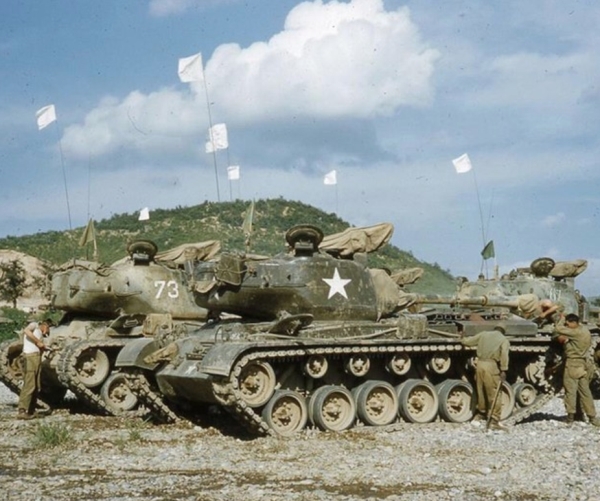
Yet, such impressive losses did not result in the tank’s demise. The Yom Kippur war, for example, cost both sides a total of 3,300 tanks destroyed or damaged. It is worth noting that the tank’s obituary has been written more than once. This deadly combination of artillery and off-the-shelf UAVs on such a large scale is unprecedented and offers new insights into their possible role and implications in future conflicts. Furthermore, the emphasis on the ATGMs risks makes us overlook the devastating effects of Ukrainian artillery, which, supported by tactical drone scouting, has inflicted severe losses on Russian mechanized units. The former made their appearance during World War II and the latter, now in their more advanced versions, have been in use since the early 1970s and were first deployed in significant numbers by the Arab coalition – specifically, the Soviet-made AT-3 Sagger - during the 1973 Yom Kippur war against Israel. The threat of light AT weapons and ATGMs is nothing new. Russia’s generals have few excuses for this. Very often, Russian tanks found themselves isolated as small vanguard units, without proper reconnaissance, air cover, or infantry, deprived of logistical support and therefore presented easy meat for Ukrainian defenders.

Secondly, Russian forces have made little-to-no effort to protect their tanks during the offensive, showing themselves unexpectedly incapable to conduct effective combined-arms maneuvers – requiring the use of different combat arms and weapons systems in synergy - which are crucial to suppress AT threats. The country has been literally flooded with both man-portable ATGMs, such as the famous US-made Javelin, the Anglo-Swedish Next generation Light Anti-tank Weapon ( NLAW), and recoilless rifles such as the Carl Gustav M4 – to the point where they are now ubiquitous among Ukrainian troops, with almost one system per soldier.Ĭombined with laser-guided high explosive artillery and off-the-shelf quadcopters dropping AT-grenades, Ukraine has created a deadly AT-saturated battlefield that is simply extraordinary, but which should be considered the exception rather than the norm. However, this has been vastly amplified by their unprecedented quantity. Take the role of standoff anti-tank guided missiles (ATGM.) Their impact in Ukraine has certainly been substantial. The high rate of armor losses in Ukraine, therefore, can be understood only by understanding its multiple causes.

High casualties among Russia’s mechanized troops have been caused by a peculiar combination of factors, ranging from poor tactics and operational planning to a smart and highly effective Ukrainian mobile defense, to the successful use of artillery against Russian armored columns and assembly areas. But while these considerations may sound convincing on paper (and are reinforced by endless social media videos of destroyed tanks), closer scrutiny shows that the tank is here to stay, at least for the foreseeable future. These numbers have encouraged some commentators to, once again, declare the end of the era of the tank, justifying this assertion with reference to its increasing vulnerability to drones and modern anti-tank (AT) missiles, as well as its complex maintenance and logistical needs.

While Ukrainian losses should not be underestimated, Russia’s tribute in terms of lost vehicles - either destroyed or captured - is huge and reaches levels not seen since World War II, with almost 800 lost tanks now visually confirmed through open-source data, and around 3,500 other armored vehicles.

troops would fight to keep South Korea free, with over 50,000 paying the highest price.Some of the most evocative images of Russia’s war of aggression in Ukraine have been of hundreds and hundreds of wrecked military vehicles littering the streets of the country’s north and south-eastern provinces. Within days they were involved in the Battle of Osan and for the next three years fought a see-saw campaign with, first the North Korean Army, and then upwards of 3 million Chinese “volunteers” who were supported by Soviet aid. troops, that of the ill-fated Task Force Smith, had landed in South Korea, flown in from nearby Japan. The Soviet- and Communist Chinese-allied North Korean forces invaded their neighbor to the south on what that dictatorship deemed the “Fatherland Liberation War” on June 25, 1950, crossing the 38th Parallel. combat troops were rushed to the aid of embattled South Korea, beginning what is often referred to as the “Forgotten War.” Some 70 years ago this month, the first U.S. Marines South of Hagaru-ri, Korea, Decemwhile “Marine and naval air are working over enemy positions with napalm.” (Photo: USMC Archives)


 0 kommentar(er)
0 kommentar(er)
